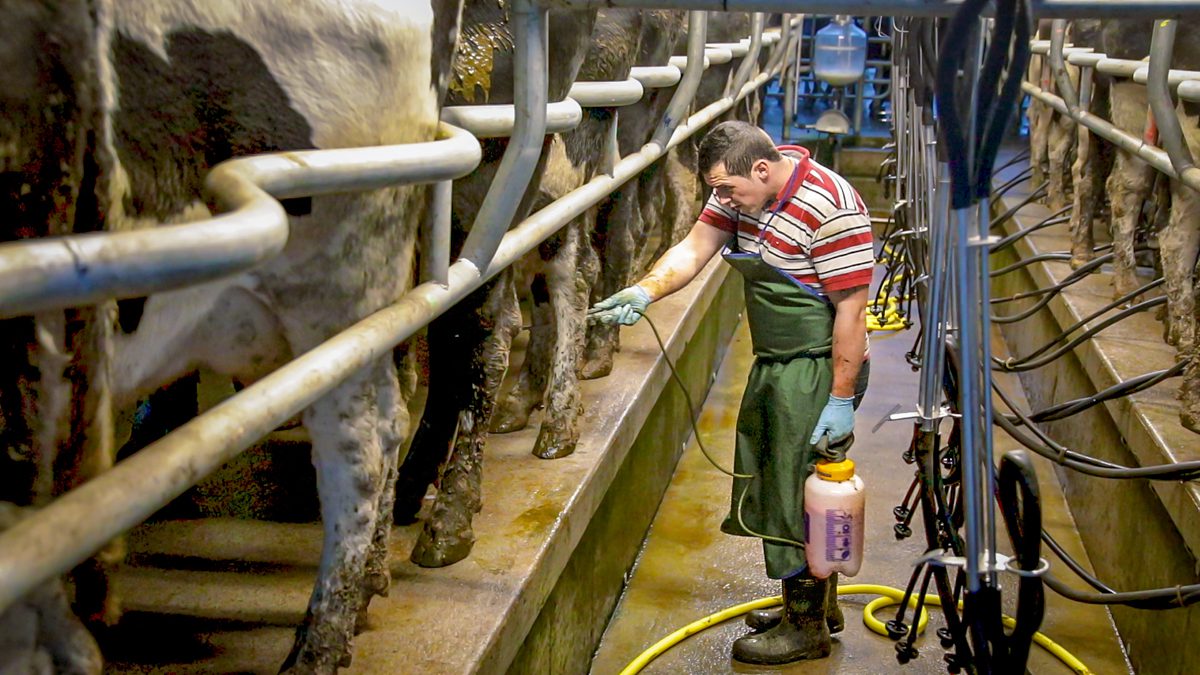The use of a post-milking teat disinfectant is an important step in preventing mastitis and cell count issues within a herd.
The last number of weeks have been challenging, with the weather making it difficult for many to get and keep cows at grass. As a result of this, many farmers are milking cows off cubicles.
Ensuring that a good milking routine is in place on the farm is vital, as doing so can prevent rises in somatic cell count (SCC) and clinical mastitis cases.
Along with a good milking routine, ensuring that a post-milking teat disinfectant is applied is also important.
The period after milking poses a high risk for cows picking up infection, as it takes the teat sphincter muscle around 30 minutes to close.
During the grazing season, this 30-minute period cows could have taken place when the cow is in a yard waiting to go back to grass or walking on farm roadways – both of which are potential infection risks.
At the moment, many cows are returning to sheds and cubicles, so the use of a teat disinfection should be an integral part of a good milking routine.
Teat disinfectant
There are two main methods used by dairy farmers as post milking teat disinfectant – being spray or dip.
With whichever method is chosen, it is important that the teat disinfectant is applied straight after the cluster has been removed from the cow, before the sphincter canal starts to close.
Spraying should be done before cows move off and are directed upwards, and the whole area of the teat should be covered.
Teat dipping can also be used to get a disinfectant onto a cow’s teat post-milking; it offers farmers better teat coverage, but takes more time.
There is also an increased risk of bacteria being spread from cow to cow if the teat-dip cup is not cleaned between milkings.
For a dip, you should be using 10ml/cow, while it should be 15ml/cow for a spray. Based on your herd size you should be able to determine if you are using the correct rates.
You should also be checking that you are getting full coverage of cow’s teats. To do this, you should spray / dip the teat as normal, and then using a paper towel, remove the disinfectant.
There should be an even coverage of the teat – if not, repeat the process until there is.
